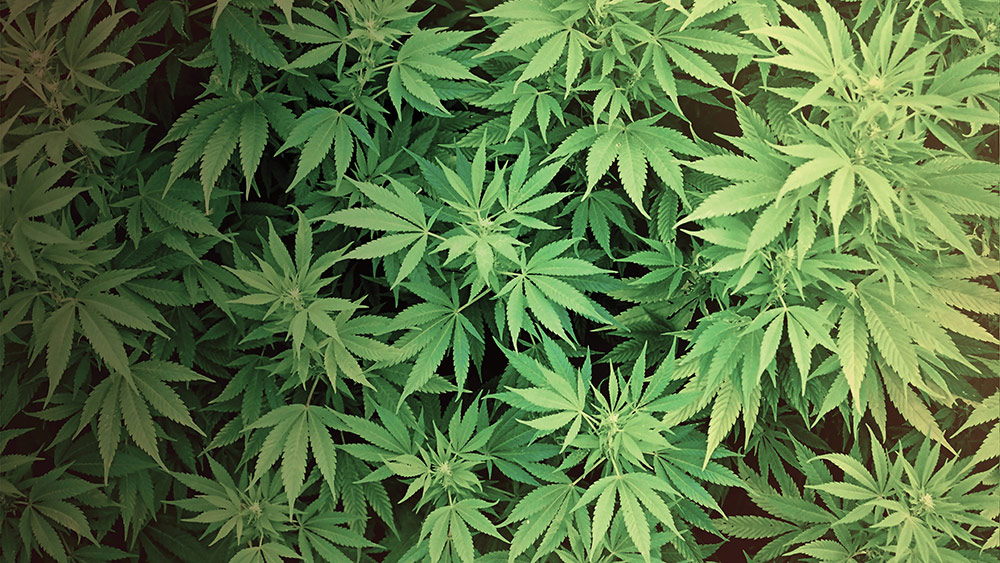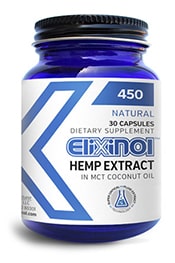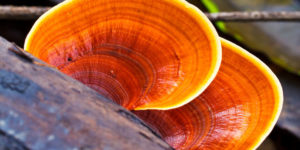The Ultimate Guide to CBD: Everything You Need to Know About the Miraculous Health Benefits of Cannabidiol
BY LEONARD LEINOW AND JULIANA BIRNBAUM

CBD for Health Concerns
The ancient doctors and healers across the globe who prescribed cannabis thousands of years ago did so because they witnessed its medical benefits firsthand. In the last half century, modern science has begun to shed light on the biological processes behind the healing, where plant and animal chemistry work in concert. The body of research on cannabidiol, CBD oil benefits, THC, and other cannabinoids has grown exponentially in the past decade.
The following brings together the latest scientific studies and stories from patients and doctors with advice on treating specific symptoms. It also includes dosage suggestions and information on recommended types of cannabinoid-based medicines for the particular condition.A 2016 opinion statement from the authors of a study on cannabinoids and gastrointestinal disorders summarizes the current climate and calls for action from the medical community to bring cannabis-based medicine into line with our current understanding of neurochemistry.
Despite the political and social controversy affiliated with it, the medical community must come to the realization that cannabinoids exist as a ubiquitous signaling system in many organ systems. Our understanding of cannabinoids and how they relate not only to homeostasis but also in disease states must be furthered through research, both clinically and in the laboratory.[174]
The words of these scientists convey the significance of the endocannabinoid system, first identified by Raphael Mechoulam in the mid-1990s and possibly one of the most important recent discoveries about the endogenous chemical transmitters involved in maintaining health. Endogenous (created naturally within the body) cannabinoids and their receptors are found not just in the brain but also in many organs as well as connective tissue, skin, glands, and immune cells. The list of CBD oil benefits and health concerns treatable by CBD is so long because these receptors are integral to so many bodily systems.
This is also the reason cannabinoids can be used as a general preventative medicine, protecting the body against the damages of stress and aging.
CBD as Preventative Medicine
Cannabinoid therapy is connected to the part of the biological matrix where body and brain meet. Since CBD (cannabidiol) and other compounds in cannabis are so similar to the chemicals created by our own bodies, they are integrated better than many synthetic drugs. According to Bradley E. Alger, a leading scientist in the study of endocannabinoids with a PhD from Harvard in experimental psychology, “With complex actions in our immune system, nervous system, and virtually all of the body’s organs, the endocannabinoids are literally a bridge between body and mind. By understanding this system, we begin to see a mechanism that could connect brain activity and states of physical health and disease.”[175]
1. Reduced Risk of Diabetes and Obesity
Several studies have shown that regular cannabis users have a lower body mass index, smaller waist circumferences, and reduced risk of diabetes and obesity. One 2011 report published in the American Journal of Epidemiology, based on a survey of more than fifty-two thousand participants, concluded that rates of obesity are about one-third lower among cannabis users.[176] This is despite the findings that participants tend to consume more calories per day, an activity that is potentially related to THC’s stimulation of ghrelin, a hormone that increases appetite but also increases the metabolism of carbohydrates. CBD on its own was shown in 2006 to lower the incidence of diabetes in lab rats,[177] and in 2015 an Israeli-American biopharmaceutical collective began stage 2 trials related to using CBD to treat diabetes.[178] Research has demonstrated that CBD benefits weight loss by helping the body convert white fat into weight-reducing brown fat, promoting noatherogenesisrmal insulin production and sugar metabolism.[179]
In studying over 4,600 test subjects, researchers found that current cannabis users had fasting insulin levels that were up to 16 percent lower than their non-using counterparts, higher levels of HDL cholesterol that protects against diabetes, and 17 percent lower levels of insulin resistance. Respondents who had used cannabis in their lifetime but were not current users showed similar but less pronounced associations, indicating that the protective effect of cannabis fades with time.[180]
Excess insulin promotes the conversion of sugars into stored fat and leads to weight gain and obesity. The research emerging about the interplay between cannabinoids and insulin regulation may lead to some major breakthroughs in the prevention of obesity and type 2 diabetes.
2. Better Cholesterol Profiles and Lowered Risk of Cardiovascular Disease
A 2013 study that measured data from 4,652 participants on the effect of cannabis on metabolic systems compared non-users to current and former users. It found that current users had higher blood levels of high-density lipoprotein (HDL-C) or “good cholesterol.” The same year, an analysis of over seven hundred members of Canada’s Inuit community found that, on average, regular cannabis users had increased levels of HDL-C and slightly lower levels of LDL-C (“bad cholesterol”).
Linked to diet and lifestyle, atherosclerosis is common in developed Western nations and can lead to heart disease or stroke. It is a chronic inflammatory disorder involving the progressive depositing of atherosclerotic plaques (immune cells carrying oxidized LDL or low-density lipoproteins). A growing body of evidence suggests that endocannabinoid signaling plays a critical role in the pathology of atherogenesis.[181] The condition is now understood to be a physical response to injuries in the arterial walls’ lining, caused by high blood pressure, infectious microbes, or excessive presence of an amino acid called homocysteine. Studies have demonstrated that inflammatory molecules stimulate the cycle leading to atherosclerotic lesions.[182] Existing treatments are moderately effective though carry numerous side effects. CB2 receptors triple in response to inflammation, allowing anandamide and 2-AG, the body’s natural cannabinoids, to decrease inflammatory responses. The CB2 receptor is also stimulated by plant-based cannabinoids.[183]
A 2005 animal trial showed that low-dose oral cannabinoids slowed the progression of atherosclerosis. Researchers the following year wrote that the immunomodulatory capacity of cannabinoids was “well established” in science and suggested they had a broad therapeutic potential for a variety of conditions, including atherosclerosis.[184]
A 2007 animal study on CBD effects showed it had a cardio-protective effect during heart attacks,[185] and more details were published that year about the involvement of the CB1 and CB2 receptors in cardiovascular illness and health.[186]
3. Reduced Risk of Cancer
Could cannabidiol help prevent tumors and other cancers before they grow? A 2012 study showed that animals treated with CBD were significantly less likely to develop colon cancer after being induced with carcinogens in a laboratory.[187] Several studies had already shown that THC prevents tumors and reduces them, including one in 1996 on animal models that found that it decreased the incidence of both benign and hepatic adenoma tumors.[188] In 2015, scientists analyzed the medical records of over eighty-four thousand male patients in California and found that those who used cannabis, but not tobacco, had a rate of bladder cancer that was 45 percent below the norm.[189] Topical products can be used to treat and prevent skin cancers. Continuing research is focused on the best ratio of CBD to THC and the most effective dose level in cancer prevention and treatment.
4. Helps Maintain Brain Health and Create Resilience to Trauma and Degeneration
Cannabinoids are neuroprotective, meaning that they help maintain and regulate brain health. The effects appear to be related to several actions they have on the brain, including the removal of damaged cells and the improved efficiency of mitochondria.[190] CBD and other antioxidant compounds in cannabis also work to reduce glutamate toxicity. Extra glutamate, which stimulates nerve cells in the brain to fire, causes cells to become over-stimulated, ultimately leading to cell damage or death. Thus, cannabinoids help protect brain cells from damage, keeping the organ healthy and functioning properly. CBD has also been shown to have an anti-inflammatory effect on the brain.[191]
As the brain ages, the creation of new neurons slows down significantly. In order to maintain brain health and prevent degenerative diseases, new cells need to be continuously created. A 2008 study showed that low doses of CBD- and THC-like cannabinoids encouraged the creation of new nerve cells in animal models, even in aging brains.[192] CBD also benefits the brain by helping to prevent other nerve-related diseases like neuropathy and Alzheimer’s disease.
5. Protects against Bone Disease and Broken Bones
Cannabinoids are facilitative of the process of bone metabolism—the cycle in which old bone material is replaced by new at a rate of about 10 percent per year, crucial to maintaining strong, healthy bones over time. CBD in particular has been shown to block an enzyme that destroys bone-building compounds in the body, reducing the risk of age-related bone diseases like osteoporosis and osteoarthritis. In both of those diseases, the body is no longer creating new bone and cartilage cells. CBD helps spur the process of new bone-cell formation, which is why it has been found to speed the healing of broken bones and, due to a stronger fracture callus, decrease the likelihood of re-fracturing the bone (bones are 35–50 percent stronger than those of non-treated subjects).[193]
6. Protects and Heals the Skin
The skin has the highest amount and concentration of CB2 receptors in the body. When applied topically as an infused lotion, serum, oil, or salve, the antioxidant (a more powerful antioxidant than vitamins E and C)[194] in CBD oil has many benefits and can repair damage from free radicals like UV rays and environmental pollutants. Cannabinoid receptors can be found in the skin and seem to be connected to the regulation of oil production in the sebaceous glands.[195] Cannabis-based topical products are being developed to treat related issues from acne to psoriasis and can promote faster healing of damaged skin.
In fact, historical documents show that cannabis preparations have been used for wound healing in both animals and people in a range of cultures spanning the globe and going back thousands of years. The use of concentrated cannabis and CBD oils to benefit and treat skin cancer is gaining popularity with a number of well-documented cases of people curing both melanoma and carcinoma-type skin cancers with the topical application of CBD and THC products. The best known of these is the case of Rick Simpson, who cured his basal cell carcinoma with cannabis oil and now has a widely distributed line of products. Cannabis applied topically is not psychoactive.
7. Anti-inflammatory Benefits of CBD
Cannabinoids have been proven to have an anti-inflammatory effect in numerous studies. CBD engages with the endocannabinoid system in many organs throughout the body, helping to reduce inflammation systemically. The therapeutic potential is impressively wide-ranging, as inflammation is involved in a broad spectrum of diseases.
8. Anxiety and Stress
The oral use of cannabis and CBD for anxiety appears in a Vedic text dated around 2000 BCE,[238] and it is one of the most common uses of the plant across various cultures. While THC can increase anxiety in some patients, it lowers it in others. However, CBD effects have been shown to consistently reduce anxiety when present in higher concentrations in the cannabis plant. On its own, CBD has been shown in a number of animal and human studies to lessen anxiety. The stress-reducing effect appears to be related to activity in both the limbic and paralimbic brain areas.
A 2012 research review assessed a number of international studies and concluded that CBD has been shown to reduce anxiety, and in particular social anxiety, in multiple studies and called for more clinical trials.[239] Two years later, researchers in an animal study related to stress and the endocannabinoid system wrote that augmentation of the endocannabinoid system might be an effective strategy to mitigate behavioral and physical consequences of stress.[240]
In addition to elucidating the relationship between CBD and anxiety, these findings appear to support that the anxiolytic effect of chronic CBD administration in stressed mice depends on its proneurogenic action in the adult hippocampus by facilitating endocannabinoid-mediated signaling.[241]
How to Take the Medicine: Dosage and Delivery
It is suggested that patients work with a health care practitioner experienced in recommending cannabidiol or medicinal cannabis so that dosage and delivery methods can be developed and fine-tuned on an individual basis. At the same time, educated and aware patients can be their own highly informed health consultants.
For anxiety, CBD products with a ratio of 20:1 or higher are recommended and administered as drops, capsules, or edibles. High-CBD cannabinoids can be very effective in reducing chronic anxiety, treating temporary stress, and protecting the body from the physiological effects of both. Varieties high in linalool, a terpene shared with lavender, are known to be effective for relieving anxiety. In particular the strain AC/DC is very effective.
Always start with the micro dose to test sensitivity and go up as needed within the dosing range, before going to the next, until symptoms subside. The micro to standard dose is usually recommended to treat stress and anxiety with CBD. For relief of immediate symptoms, as in a panic or anxiety attack, vaporizing or smoking work well. The medication lasts one to three hours, whereas most ingested products, including CBD oil, take thirty to sixty minutes before taking effect and last six to eight hours. Vaporizers that use a cartridge filled with the CO2 concentrate are highly effective, and these are available in various ratios of CBD to THC. Herbal vaporizers that use the whole plant are also an effective delivery method. Sublingual sprays or tinctures taken as liquid drops take effect quickly and last longer than inhaled products.
Effectiveness: Current Science—CBD Benefits for Anxiety
The Cannabis Health Index (CHI) is an evidence-based scoring system for cannabis (in general, not just CBD oil effects) and its effectiveness on various health issues based on currently available research data. Refer to cannabishealthindex.com for updated information. Using this rubric and based on eleven studies, cannabis rated in the possible-to-probable range of efficacy for treatment of anxiety.
Conscious Lifestyle Magazine Recommends:
 Elixinol Organic High Potency CBD Capsules
Elixinol Organic High Potency CBD Capsules
Elixinol offers a highly concentrated, high-potency, organic whole-hemp plant CBD oil , which is naturally extracted with carbon dioxide and free of all synthetics and chemicals. Whole-hemp plant extracts contain synergistic compounds that are believed to enhance the effectiveness and benefits of CBD.
9. Depression and Mood Disorders
Clinical depression is a serious mood disorder characterized by persistent sadness and loss of interest, sometimes leading to decreased appetite and energy and suicidal thoughts. Commonly used pharmaceuticals for depression often target serotonin, a chemical messenger that is believed to act as a mood stabilizer. The neural network of the endocannabinoid system works similarly to the way that serotonin, dopamine, and other systems do, and, according to some research, cannabinoids have an effect on serotonin levels. Whereas a low dose of THC increases serotonin, high doses cause a decrease that could worsen the condition.[312] In 2009 researchers concluded that there was substantial evidence pointing to endocannabinoid signaling as a target for the pharmacotherapy of depression.[313] Authors of a 2016 study wrote that “CBD could represent a novel fast antidepressant drug, via enhancing both serotonergic and glutamate cortical signaling through a 5-HT1A receptor-dependent mechanism.”[314]
CBD might especially be effective for depression related to chronic stress, which has been shown to cause a decrease in endocannabinoid levels.[315,316]
How to Take the Medicine: Dosage and Delivery
It is suggested that patients work with a health care practitioner experienced in recommending cannabidiol or medicinal cannabis so that dosage and delivery methods can be developed and fine-tuned on an individual basis. At the same time, educated and aware patients can be their own highly informed health consultants.
CBD products with a ratio of 20:1 or higher are recommended and administered as drops, capsules, or edibles. Specifically, products made with Valentine X or Electra 4 are more energizing, helping relieve depression. When low energy is an issue, sativa or other stimulating strains can be helpful for improving energy and focus when THC can be tolerated. Varieties that are high in the terpene limonene are recommended for mood elevation.
Always start with the micro dose to test sensitivity and go up as needed within the dosing range before going to the next, until symptoms subside. The micro to standard dose is usually recommended to treat depression. Vaporized or smoked cannabis is recommended for relief of immediate symptoms, or a boost in dosage, and it can also be useful for sleep issues. Sublingual sprays or tinctures taken as liquid drops take effect quickly and last longer than inhaled products.
Effectiveness: Current Science—CBD Benefits for Depression
The Cannabis Health Index (CHI) is an evidence-based scoring system for cannabis (in general, not just CBD effects) and its effectiveness on various health issues based on currently available research data. Refer to cannabishealthindex.com for updated information. Using this rubric and based on twenty-one studies, cannabis rated in the possible-to-probable range of efficacy for treatment of depression.
Research in 2005 called for clinical trials to look into the effectiveness of cannabinoids for bipolar disorder (manic depression).[317] In 2010, a study suggested that CBD was not useful for the manic episodes associated with bipolar disorder.[318] However, for depressive episodes, the evidence points to greater potential for effectiveness.[319]
Authors of a 2013 review of animal studies wrote that CBD showed antianxiety and antidepressant effects in several models and suggested that the compound worked by interacting with the 5-HT1A neuroreceptor.[320]
“It is important to remember that CBD benefits and improves the activity in the endocannabinoid system by increasing the time anandamide works on the CB1 and CB2 receptors,” writes Dr. Michael Moskowitz. “Anandamide works on the serotonin, norepinephrine, and dopamine systems. It also works on the GABA-glutamate system and the hypothalamic-pituitary-adrenal axis. Its main role is restoring balance through inhibition when levels are too high and enhancement when they are too low. This is the most likely reason phytocannabinoids in general and CBD specifically are able to regulate depression and anxiety.”[321]
10. Pain
“For the relief of certain kinds of pain, I believe, there is no more useful medicine than Cannabis within our reach,” wrote Sir John Russell Reynolds, neurologist, epilepsy research pioneer, and physician to Queen Victoria back in 1859.[382] In fact, cannabis was used for pain relief in all of the major ancient civilizations from Asia through the Middle East and into Europe and the Americas. The scientific inquiry into cannabis over the past several decades has confirmed that it is an effective and safe analgesic for many kinds of pain.
Of all the reasons that people use CBD today, pain is the most common. The same can be said of cannabis in general. In the United States, over seventy million people suffer from chronic pain, which is defined as experiencing over one hundred days per year of pain. Physicians differentiate between neuropathic (usually chronic) and nociceptive pains (usually time-limited), and cannabis works on most neuropathic and many nociceptive types of pain. A number of studies have demonstrated that the endocannabinoid system is both centrally and peripherally involved in the processing of pain signals.[383] Most discussions of using CBD for pain treatment suggest that finding the right dosage is critical.
Cannabinoids can be used along with opioid medications, and a number of studies have demonstrated that they can reduce the amount of opioids needed, lessen the buildup of tolerance, and reduce the severity of withdrawal.[384] At least ten randomized, controlled trials on over one thousand patients have demonstrated efficacy of cannabinoids for neuropathic pain of various origins.
How to Take the Medicine: Dosage and Delivery
It is suggested that patients work with a health care practitioner experienced in recommending CBD oil or medicinal cannabis so that dosage and delivery methods can be developed and fine-tuned on an individual basis. At the same time, educated and aware patients can be their own highly informed health consultants.
Oral CBD products with a ratio of 20:1 or higher and administered as drops, capsules, or edibles can be very effective in treating pain, especially the inflammatory type. Most discussions of treating pain with CBD suggest that finding the right dosage is critical. Always start with the micro dose to test sensitivity and go up as needed within the dosing range by body weight until symptoms subside. The micro to standard dose is usually recommended to treat pain, but patients need to carefully monitor their condition and experiment to find the right formula; 10–40 mg of CBD or CBD+THC together is usually enough.
If CBD-dominant products alone are not enough to treat a particular case, products with a higher ratio of THC are sometimes recommended to better manage pain. For day use, more stimulating, sativa varieties with higher concentrations of myrcene could be added to the formula. In general, for pain, and especially for evening and nighttime, indica strains are favored for their relaxing, sedative effect. A person without experience with THC should use caution and titrate slowly up to higher doses. Research as well as patient feedback have indicated that, in general, a ratio of 4:1 CBD:THC is the most effective for both neuropathic and inflammatory pain. Each individual is different, however—for some, a 1:1 ratio of CBD:THC can be more effective, and others prefer a high-THC strain when it can be tolerated. Each patient’s tolerance and sensitivity will differ, and through titration the correct strain and ratio combination can be found.
Other cannabinoids are also shown to relieve pain, including CBC, CBG, THCV, and THCA. Chemotypes high in beta-caryophyllene, myrcene, and linalool provide additional pain relief and increase the effectiveness of other cannabinoids for analgesia.
For relief of immediate symptoms, as in a flare-up of pain, vaporizing or smoking work well. The medication effect is immediate and lasts one to three hours, whereas most ingested products take thirty to sixty minutes before taking effect (faster on an empty stomach) and last six to eight hours. Vaporizers that use a cartridge filled with the CO2 concentrate are highly effective, and these are available in various ratios of CBD to THC. Herbal vaporizers that use the whole plant are also an effective delivery method. Sublingual sprays or tinctures taken as liquid drops also take effect quickly and last longer than inhaled products.
When pain is localized, topical products can be applied. These can be made using CBD-dominant cannabis as well as THC strains. Topicals affect the cells near application and through several layers of tissue but do not cross the blood-brain barrier and are, therefore, not psychoactive. These may be available as CBD oils, ointments, salves, or other forms, and with varying ratios of CBD and THC (a ratio of 1:1 is often recommended as ideal for skin application). The skin has the highest amount and concentration of CB2 receptors in the body.
Effectiveness: Current Science—CBD Benefits for Pain
The Cannabis Health Index (CHI) is an evidence-based scoring system for cannabis (in general, not just CBD effects) and its effectiveness on various health issues based on currently available research data. Refer to cannabishealthindex.com for updated information and more about studies related to specific types of pain. Considering all of the studies together, which number over forty (for various types of pain), CBD and cannabis are shown to have a rating of likely probable efficacy. It is one of the best-substantiated medical uses of cannabinoids.
Sativex, a cannabis plant–derived oromucosal spray containing equal proportions of THC and CBD, has been approved in a number of countries for use to treat specific types of pain. Numerous randomized clinical trials have demonstrated the safety and efficacy of Sativex for treatment of central and peripheral neuropathic pain, rheumatoid arthritis, and cancer pain. [386]
Cannabinoids affect the transmission of pain signals from the affected region to the brain (ascending) and from the brain to the affected region (descending). A 2011 study showed that CBD and CBC stimulated descending pain-blocking pathways in the nervous system and caused analgesia by interacting with several target proteins involved in nociceptive control. Authors concluded that the cannabinoids “might represent useful therapeutic agents with multiple mechanisms of action.” [387] The following year, researchers reported that CBD significantly suppressed chronic inflammatory and neuropathic pain without causing apparent analgesic tolerance in animals. [388] And then in 2013, researchers concluded that chronic pain patients prescribed hydrocodone were less likely to take the painkiller if they used cannabis. [389]
11. Sleep Disorders (Insomnia, Sleep Apnea)
Cannabis and sleep have a complex relationship that is only beginning to be understood by science. In general, for most people, indica strains are more relaxing and effective for sleep disorders, whereas sativa strains are more stimulating and tend to keep people awake.
Several studies conducted between 2004 and 2008 demonstrated the variable effect of different cannabinoids on sleep. In one, 15 mg of THC appeared to have sedative properties, while 15 mg of CBD appeared to have alerting properties.[416] Another tested the effects of CBD on animal models in both lights-on and lights-off environments and found that this non-psychoactive cannabis compound increased alertness with the lights on and had no discernable effects on lights-off sleep. The study’s authors concluded that CBD might actually hold therapeutic promise for those with somnolence, or excessive daytime sleepiness from a not-so-good night’s rest. Another study found CBD to be wake-inducing for most subjects, though some reported better sleep a few hours after taking it. [417]
“Many of my patients report either better energy or sleepiness on the same high-CBD/low-THC plants,” Dr. Michael Moskowitz reported. “Most, however, feel more energy on high-CBD cannabis.” [418]
In general, indica varieties of THC appear to work best as a sleep aid for most people. However, a significant number of people find THC, even indica strains, will make the mind more active. For these people, CBD oil can benefit them and tends to work well, providing the relaxation and calm for the mental as well as the physical body. For these people, CBD taken at nighttime as part of a bedtime regime produces a restful sleep, not the alertness produced in the daytime. This bidirectional effect of CBD is the result of balancing the endocannabinoid system.
In relation to sleep apnea, a 2002 animal study observed the ability of THC to restore respiratory stability by modulating serotonin signaling and reducing spontaneous sleep-disordered breathing.[419] In 2013 a trial using the pharmaceutical drug dronabinol, a synthetic THC mimic, noted improvements in fifteen out of seventeen study participants following twenty-one days of treatment.[420]
How to Take the Medicine: Dosage and Delivery
It is suggested that patients work with a health care practitioner experienced in recommending CBD or medicinal cannabis so that dosage and delivery methods can be developed and fine-tuned on an individual basis. At the same time, educated and aware patients can be their own highly informed health consultants.
As mentioned previously, while CBD-dominant products help some people sleep, in others it promotes wakefulness. Orally administered THC, especially products from heavier “Kush” strains and Purple cannabis varieties, are very effective for sleep disorders. These tend to be high in myrcene and linalool, a terpene shared with lavender and known to be effective for relaxation. Cannabis combinations with ratios of 1:1, 4:1, or 24:1 CBD:THC can be used when patients want to reduce psychoactivity.
Oral consumption is recommended as it usually lasts the whole night. Always start with the micro dose to test sensitivity and go up as needed within the dosing range before going to the next, until symptoms subside. The micro to standard dose is usually recommended to treat insomnia and sleep apnea. When relaxing indica strains are used with higher THC levels, a dose of 5–10 mg is usually sufficient. Other people find they need larger doses, such as 15–40 mg. CBD taken as a tincture or edible will aid in a restful six to seven hours of sleep. This type of disorder varies widely from one patient to the next. Often, one needs to perform some experimental research and try strains of different CBD:THC ratios to figure out how CBD oil benefits their sleep and the best protocol.
For immediate medicinal effects, vaporizing or smoking work well. This can be helpful for either initial sleep onset or for wakefulness in the middle of a rest period but only lasts one to three hours. The medication effect is immediate, whereas most ingested products take thirty to sixty minutes before taking effect (faster on an empty stomach) and last six to eight hours. Vaporizers that use a cartridge filled with the CO2 concentrate are convenient and highly effective, and these are available in various ratios of CBD to THC. Herbal vaporizers that use the whole plant are also an effective delivery method. Sublingual sprays or tinctures taken as liquid drops also take effect quickly and last longer than inhaled products.
Effectiveness: Current Science—CBD Benefits for Sleep Disorders
The Cannabis Health Index (CHI) is an evidence-based scoring system for cannabis (in general, not just CBD oil effects) and its effectiveness on various health issues based on currently available research data. Refer to cannabishealthindex.com for updated information. Using this rubric, the use of cannabis-based products for treating insomnia has a rating of likely probable efficacy based on the four studies available at press time (3.4 points).
A 2007 study with the pharmaceutical 1:1 CBD:THC spray showed good results in helping patients with chronic pain sleep better.[421] REM sleep behavior disorder (RBD) is characterized by the loss of complete muscle relaxation during REM sleep, associated with nightmares and physical activity during dreaming. Four patients in a case series treated with CBD in 2014 had prompt and substantial reduction in the frequency of RBD-related events without side effects. [422]
This article is excerpted with permission from CBD: A Patient’s Guide to Medicinal Cannabis—Healing without the High by Leonard Leinow and Juliana Birnbaum.
References
[174] Zachary Wilmer Reichenbach and Ron Schey, “Cannabinoids and GI Disorders: Endogenous and Exogenous,” Current Treatment Options in Gastroenterology 14, no. 4 (2016): 461–477. doi:10.1007/s11938-016-0110.
[175] Bradley E. Alger, “Getting High on the Endocannabinoid System,” Cerebrum: The Dana Forum on Brain Science (2013): 14.
[176] Yann LeStrat and Bernard Le Foll, “Obesity and Cannabis Use: Results From 2 Representative National Surveys,” American Journal of Epidemiology 174, no. 8 (2011): 929–933. doi:10.1093/aje/kwr200.
[177] L. Weiss, M. Zeira, S. Reich, M. Har-Noy, R. Mechoulam, S. Slavin, and R. Gallily, “Cannabidiol Lowers Incidence of Diabetes in Non-obese Diabetic Mice,” Autoimmunity 39, no. 2 (2006): 143–151.
[178] Abigail Klein Leichman, “Cannabis Extract to Be Used to Treat Diabetes,” Israel 21c, April 21, 2015, www.israel21c.org/cannabis-extract -to-be-used-to-treat-diabetes/.
[179] H. J. Parray and J. W. Yun, “Cannabidiol Promotes Browning in 3T3-L1 Adipocytes,” Molecular and Cellular Biochemistry 416 (2016): 131–139.
[180] E. A. Penner, H. Buettner, and M. A. Mittleman, “Marijuana Use on Glucose, Insulin, and Insulin Resistance among US Adults,” American Journal of Medicine 126 (2013): 583–589.
[181] Sabine Steffens, Niels R. Veillard, Claire Arnaud, Graziano Pelli, Fabienne Burger, Christian Staub, Andreas Zimmer, Jean-Louis Frossard, and François Mach, “Low Dose Oral Cannabinoid Therapy Reduces Progression of Atherosclerosis in Mice,” Nature 434 (2005): 782–786.
[182] Francois Mach and Sabine Steffens, “The Role of the Endocannabinoid System in Atherosclerosis,” Journal of Neuroendocrinology 20, no. S1 (2008): 53–57. doi:10.1111/j.1365-2826.2008.01685.x.
[183] Mauro Maccarrone, Itai Bab, Tamás Bíró, Guy A. Cabral, Sudhansu K. Dey, Vincenzo Di Marzo, Justin C. Konje, George Kunos, Raphael Mechoulam, Pal Pacher, Keith A. Sharkey, and Andreas Zimmer, “Endocannabinoid Signaling at the Periphery, 50 Years after THC,” Cell: Trends in Pharmacological Science 36, no. 5 (May 2015): 277–296.
[184] Sabine Steffens and Francois Mach, “Cannabinoid Receptors in Atherosclerosis,” Current Opinion in Lipidology 17, no. 5 (2006): 519–526. doi:10.1097/01.mol.0000245257.17764.b2.
[185] Ronen Durst, Haim Danenberg, Ruth Gallily, Raphael Mechoulam, Keren Meir, Etty Grad, Ronen Beeri, Thea Pugatsch, Elizabet Tarsish, and Chaim Lotan, “Cannabidiol, A Nonpsychoactive Cannabis Constituent, Protects against Myocardial Ischemic Reperfusion Injury,” American Journal of Physiology – Heart and Circulatory Physiology 293, no. 6 (2007): H3602–H3607. doi:10.1152/ajpheart.00098.2007.
[186] John C. Ashton and Paul F. Smith, “Cannabinoids and Cardiovascular Disease: The Outlook for Clinical Treatments,” Current Vascular Pharmacology 5, no. 3 (2007): 175–184. doi:10.2174/157016107781024109.
[187] Gabriella Aviello, Barbara Romano, Francesca Borrelli, Raffaele Capasso, Laura Gallo, Fabiana Piscitelli, Vincenzo Di Marzo, and Angelo A. Izzo, “Chemopreventive Effect of the Non-psychotropic Phytocannabinoid Cannabidiol on Experimental Colon Cancer,” Journal of Molecular Medicine 90, no. 8 (2012): 925–934. doi:10.1007/s00109-011-0856-x.
[188] “NTP Toxicology and Carcinogenesis Studies of 1-Trans-Delta(9)- Tetrahydrocannabinol (CAS No. 1972-08-3) in F344 Rats and B6C3F1Mice (Gavage Studies),” National Toxicology Program Technical Report Series 446 (1996): 1–317.
[189] A. A. Thomas, L. P. Wallner, V. P. Quinn, J. Slezak, S. K. Van Den Eeden, G. W. Chien, and S. J. Jacobsen, “Association between Cannabis Use and the Risk of Bladder Cancer: Results from the California Men’s Health Study,” Urology 85, iss. 2 (2015): 388–393.
[190] Andras Bilkei-Gorzo, “The Endocannabinoid System in Normal and Pathological Brain Ageing,” Philosophical Transactions of the Royal Society of London 367, no. 1607 (2012): 3326–3341. doi:10.1098/rstb.2011.0388.
[191] J. Fernández-Ruiz, O. Sagredo, M. R. Pazos, C. García, R. Pertwee, R. Mechoulam, and J. Martínez-Orgado, “Cannabidiol for Neurodegenerative Disorders: Important New Clinical Applications for This Phytocannabinoid?” British Journal of Clinical Pharmacology 75, no. 2 (May 25, 2012): 323–333.
[192] Gary L. Wenk, “Animal Models of Alzheimer’s Disease,” Animal Models of Neurological Disease I (1992): 29–64, doi:10.1385/0-89603-208-6:29.
[193] N. M. Kogan, E. Melamed, E. Wasserman, B. Raphael, A. Breuer, K. S. Stok, R. Sondergaard, A. V. Escudero, S. Baraghithy, M. Attar-Namdar, S. Friedlander-Barenboim, N. Mathavan, H. Isaksson, R. Mechoulam, R. Müller, A. Bajayo, Y. Gabet, and I. Bab, “Cannabidiol, A Major Nonpsychotropic Cannabis Constituent, Enhances Fracture Healing and Stimulates Lysyl Hydroxylase Activity in Osteoblasts,” Journal of Mineral and Bone Research 30, no. 10 (October 2015): 1905–1913.
[194] A. J. Hampson, M. Grimaldi, J. Axelrod, and D. Wink, “Cannabidiol and (−)∆9-Tetrahydrocannabinol Are Neuroprotective Antioxidants,” Proceedings of the National Academy of Sciences of the United States of America 95, no. 14 (1998): 8268–8273.
[195] N. Dobrosi, B. I. Toth, G. Nagy, A. Dozsa, T. Geczy, L. Nagy, C. C. Zouboulis, R. Paus, L. Kovacs, and T. Biro, “Endocannabinoids Enhance Lipid Synthesis and Apoptosis of Human Sebocytes via Cannabinoid Receptor-2-Mediated Signaling,” The FASEB Journal 22, no. 10 (2008): 3685– 3695. doi:10.1096/fj.0604877.
[238] G. A. Grierson, “The Hemp Plant in Sanskrit and Hindi Literature,” Indian Antiquary (September 1894): 260–262.
[239] A. R. Schier, N. P. Ribeiro, A. C. Silva, J. E. Hallak, J. A. Crippa, A. E. Nardi, and A. W. Zuardi, “Cannabidiol, a Cannabis sativa Constituent, As an Anxiolytic Drug,” Revista Brasileira de Psiquiatri 34, suppl. 1 (2012): S104–S110. PubMed PMID: 22729452.
[240] R. J. Bluett, J. C. Gamble-George, D. J. Hermanson, N. D. Hartley, L. J. Marnett, and S. Patel, “Central Anandamide Defciency Predicts StressInduced Anxiety: Behavioral Reversal through Endocannabinoid Augmentation,” Translational Psychiatry 8, no. 4 (2014): e408. doi:10.1038/ tp.2014.53.
[241] A. C. Campos, Z. Ortega, J. Palazuelos, M. V. Fogaça, D. C. Aguiar, J. Díaz-Alonso, S. Ortega-Gutiérrez, H. Vázquez-Villa, F. A. Moreira, M. Guzmán, I. Galve-Roperh, and F. S. Guimarães, “The Anxiolytic Effect of Cannabidiol on Chronically Stressed Mice Depends on Hippocampal Neurogenesis: Involvement of the Endocannabinoid System,” International Journal of Neuropsychopharmacology 16, no. 6 (2013): 1407–1419. doi:10.1017/S1461145712001502.
[312] McGill University, “Cannabis: Potent Anti-depressant In Low Doses, Worsens Depression At High Doses,” ScienceDaily, October 24, 2007.
[313] M. N. Hill, C. J. Hillard, F. R. Bambico, S. Patel, B. B. Gorzalka, and G. Gobbi, “The Therapeutic Potential of the Endocannabinoid System for the Development of a Novel Class of Antidepressants,” Trends in Pharmacological Sciences 30, no. 9 (2009): 484–493. doi:10.1016/j.tips.2009.06.006.
[314] R. Linge, L. Jiménez-Sánchez, L. Campa, F. Pilar-Cuéllar, R. Vidal, A. Pazos, and A. Adell Díaz, “Cannabidiol Induces Rapid-Acting Antidepressant-Like Effects and Enhances Cortical 5-HT/Glutamate Neurotransmission: Role of 5-HT1A Receptors,” Neuropharmacology 103 (2016): 16. doi:10.1016/j.neuropharm.2015.12.017.
[315] Samir Haj-Dahmane and Roh-Yu Shen, “Endocannabinoid Signaling and the Regulation of the Serotonin System,” in Endocannabinoid Regulation of Monoamines in Psychiatric and Neurological Disorders, ed. Elisabeth J. Van Bockstaele (New York: Springer, 2013), 239–254. doi:10.1007/977-4614-7940-6_11.
[316] M. N. Hill, C. J. Hillard, F. R. Bambico, S. Patel, B. B. Gorzalka, and G. Gobbi, “The Therapeutic Potential of the Endocannabinoid System for the Development of a Novel Class of Antidepressants,” Trends in Pharmacological Sciences 30, no. 9 (2009): 484–493. doi:10.1016/j.tips.2009.06.006.
[317] C. H. Ashton, P. B. Moore, P. Gallagher, and A. H. Young, “Cannabinoids in Bipolar Affective Disorder: A Review and Discussion of Their Therapeutic Potential,” Journal of Psychopharmacology 19, no. 3 (2005): 293–300.
[318] A. Zuardi, J. Crippa, S. Dursun, S. Morais, J. Vilela, R. Sanches, and J. Hallak, “Cannabidiol Was Ineffective for Manic Episode of Bipolar Affective Disorder,” Journal of Psychopharmacology 24, no. 1 (2010): 135– 137. doi:10.1177/0269881108096521.
[319] Abir T. El-Alfy, Kelly Ivey, Keisha Robinson, Safwat Ahmed, Mohamed Radwan, Desmond Slade, Ikhlas Khan, Mahmoud ElSohly, and Samir Ross, “Antidepressant-Like Effect of ∆9-tetrahydrocannabinol and Other Cannabinoids Isolated from Cannabis sativa,” Journal of Pharmacology, Biochemistry and Behavior 95, no. 4 (June 2010): 434–442.
[320] A. R. de Mello Schier, N. P. de Oliveira Ribeiro, D. S. Coutinho, S. Machado, O. Arias-Carrión, J. A. Crippa, A. W. Zuardi, A. E. Nardi, and A. C. Silva, “Antidepressant-Like and Anxiolytic-Like Effects of Cannabidiol: A Chemical Compound of Cannabis sativa,” CNS Neurol Disorders – Drug Targets 13, no. 6 (2014): 953–960.
[321] Michael Moskowitz MD, personal communication with the authors, February 2, 2017.
[382] J. Russell Reynolds, “On Some of the Therapeutical Uses of Indian Hemp,” in Archives of Medicine, vol. 2 (London, 1859), 154.
[383] R. Greco, V. Gasperi, M. Maccarrone, and C. Tassorelli, “The Endocannabinoid System and Migraine,” Experimental Neurololgy 224, no. 1 (2010): 85–91. doi:10.1016/j.expneurol.2010.03.029.
[384] Ethan Russo and Andrea Hohmann, “Role of Cannabinoids in Pain Management,” in Comprehensive Treatment of Chronic Pain by Medical, Interventional and Integrative Approaches, ed. Timothy R. Deer et al. (New York: Springer, 2013), 181–197.
[385] “Testimonials,” No High CBD Oil, last modifed March 8, 2017, http:// nohighcbdoil.weebly.com/testimonials.html.
[386] E. B. Russo, “Cannabinoids in the Management of Diffcult to Treat Pain,” Journal of Therapeutics and Clinical Risk Management 4, no. 1 (2008): 245–259.
[387] S. Maione, F. Piscitelli, L. Gatta, D. Vita, L. De Petrocellis, E. Palazzo, V. de Novellis, and V. Di Marzo, “Non-psychoactive Cannabinoids Modulate the Descending Pathway of Antinociception in Anaesthetized Rats through Several Mechanisms of Action,” British Journal of Phramacology 162, no. 3 (2011): 584. doi:10.1111/j.1476-5381.2010.01063.x.
[388] W. Xiong, T. Cui, K. Cheng, F. Yang, S. R. Chen, D. Willenbring, Y. Guan, H. L. Pan, K. Ren, Y. Xu, and L. Zhang, “Cannabinoids Suppress Infammatory and Neuropathic Pain by Targeting α3 Glycine Receptors,” Journal of Experimental Medicine 209, no. 6 (2012): 1121–1134. doi:10.1084 /jem.20120242.
[389] M. DeGeorge, E. Dawson, P. Woster, L. Burke, and K. Bronstein, An Analysis of the Association between Marijuana Use and Potential Nonadherence in Patients Prescribed Hydrocodon (Baltimore: Ameritox, 2013), www.ameritox .com/wp-content/uploads/Ananalysisoftheassociationbetweenmarijua nauseandpotentialnonadherence_AAPM2013.pdf.
[417] E. Murillo-Rodríguez, D. Millán-Aldaco, M. Palomero-Rivero, R. Mechoulam, and R. Drucker-Colín, “The Nonpsychoactive Cannabis Constituent Cannabidiol Is a Wake-Inducing Agent,” Behavioral Neuroscience 122, no. 6 (2008): 1378–1382.
[418] Dr. Michael Moskowitz, personal communication with authors, October 2016
[419] D. W. Carley, S. Paviovic, M. Janelidze, and M. Radulovacki, “Functional Role for Cannabinoids in Respiratory Stability during Sleep,” Sleep 25, no. 4 (2002): 391–398. PubMed PMID: 12071539.
[420] Bharati Prasad, Miodrag G. Radulovacki, and David W. Carley, “Proof of Concept Trial of Dronabinol in Obstructive Sleep Apnea,” Frontiers in Psychiatry 4 (2013): 1.
[421] E. B. Russo, G. W. Guy, and P. J. Robson, “Cannabis, Pain, and Sleep: Lessons from Therapeutic Clinical Trials of Sativex, a Cannabis-Based Medicine,” Chemistry and Biodiversity 4, no. 8 (2007): 1729–1743.
[422] M. H. N. Chagas, A. L. Eckeli, A. W. Zuardi, M. A. Pena-Pereira, M. A. Sobreira-Neto, E. T. Sobreira, M. R. Camilo, M. M. Bergamaschi, C. H. Schenck, J. E. C. Hallak, V. Tumas, and J. A. S. Crippa, “Cannabidiol Can Improve Complex Sleep-Related Behaviours Associated with Rapid Eye Movement Sleep Behaviour Disorder in Parkinson’s Disease Patients: A Case Series,” Journal of Clinical Pharmacy and Therapeutics 39 (2014): 564–566. doi:10.1111/jcpt.12179.
About The Author
Leonard Leinow has three decades of experience growing and studying medical cannabis and brings a unique spiritual perspective to his work. In 2009, he formed Synergy Wellness, a not-for-profit medical cannabis collective in California. Synergy Wellness has over 3,500 members in its collective and is an artisan organization making hand-crafted organic and natural whole plant-based products. They are specialists in CBD (cannabidiol), the non-psychoactive portion of cannabis, and are pioneers in this aspect of the industry. Leinow is known for his proprietary blends of tinctures and medicine used for cancer and epilepsy patients.
Juliana Birnbaum is trained as a cultural anthropologist and skilled in four languages and has lived and worked in the U.S., Europe, Japan, Nepal, Costa Rica and Brazil. In 2005 she founded Voices in Solidarity, an initiative that partnered with Ashaninka indigenous tribal leaders from the Brazilian Amazon to support the development of the Yorenka Ãtame community-led environmental educational center featured in Sustainable [R]evolution. She was the first graduate of the Cornerstone Doula School, one of the most rigorous natural birth programs in the U.S., focusing on a holistic model of care. She is engaged variously as writer, editor, teacher, midwife assistant and mother when not attempting new yoga poses or learning how to garden.























